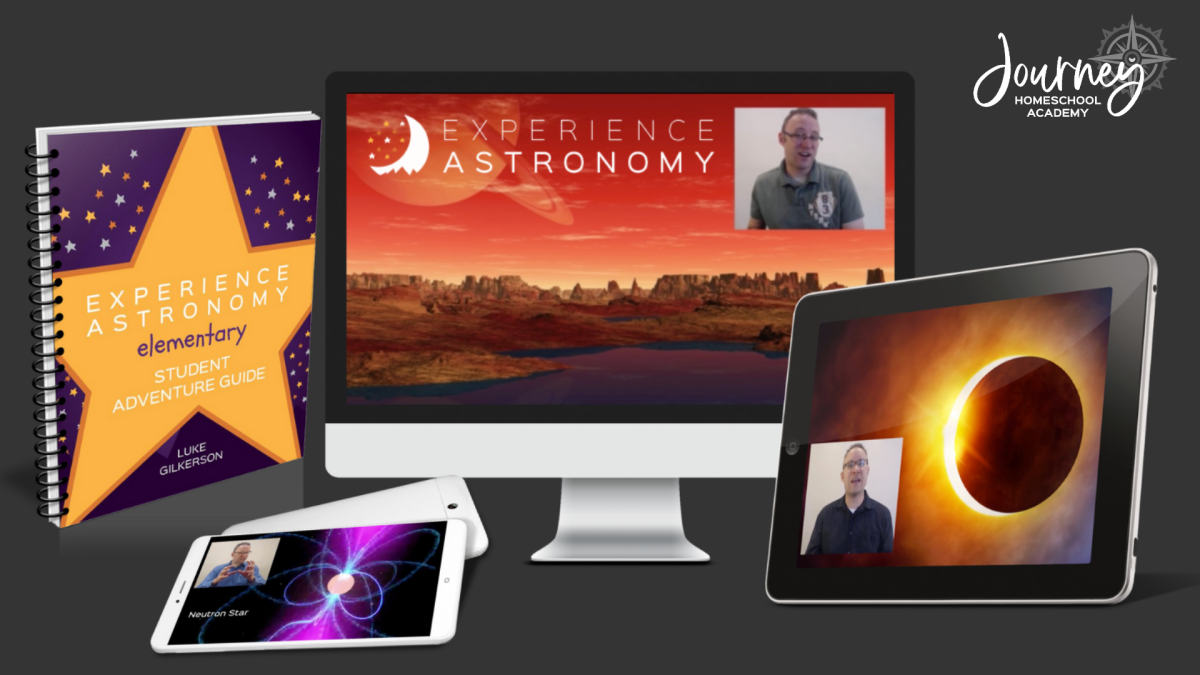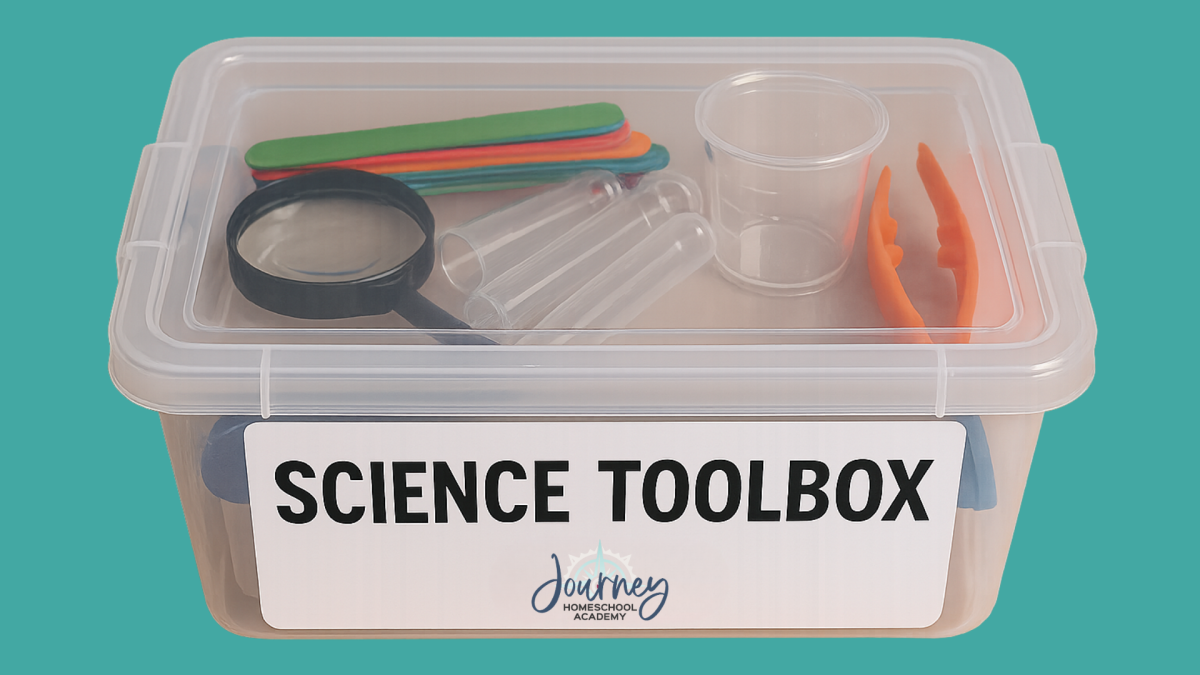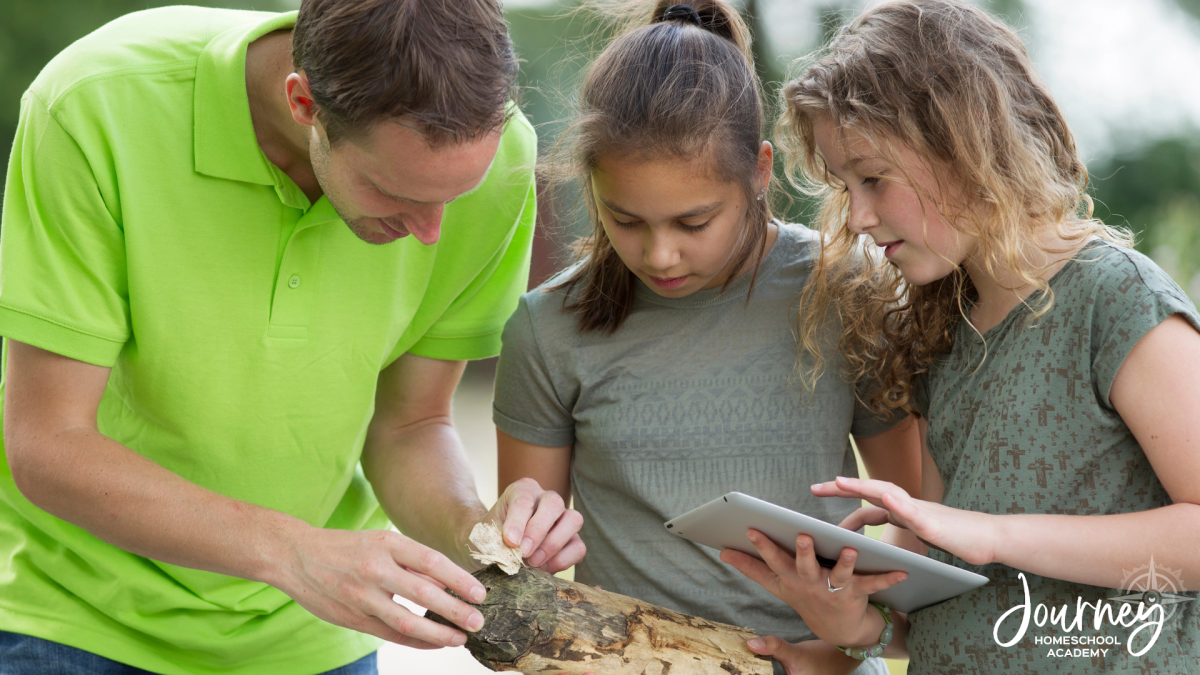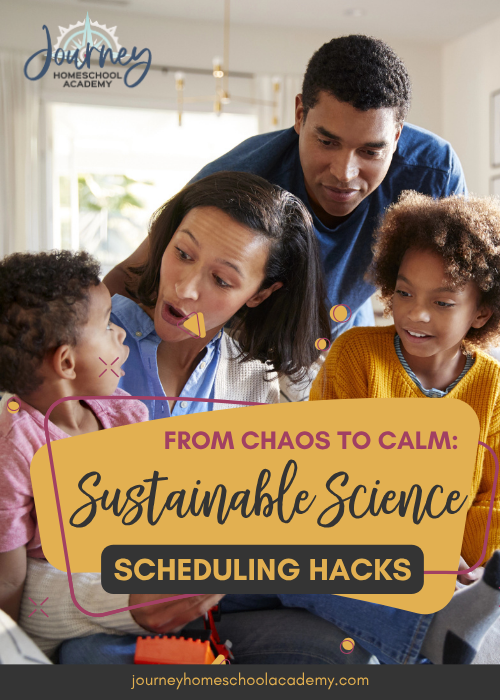I still remember the semester the volcanic-model experiment exploded all over the dining-room table at 8 p.m. while the baby was teething and the dog kept sampling last week’s “rotting-fruit compost” investigation.
Somewhere between scraping papier-mâché off the ceiling and hunting for safety goggles I vowed, there has to be an easier way to teach science.
That’s where the idea of sustainability came in—not just “reuse your beakers,” but structuring science so it blesses our time, budget, and walk with the Lord.
Below you’ll find a step-by-step blueprint for building a sustainable homeschool science plan that feeds curiosity, keeps mom’s sanity intact, and continually points your kids back to the Creator.
From Chaos to Calm:
Sustainable Science Scheduling Hacks
What Is a Sustainable Science Plan?
A sustainable plan balances three pillars:
- Manageable pace – bite-sized weekly lessons (think 30–40 minutes of video + a single hands-on lab) so nobody dreads “science day.”
- Reusable resources – common-household supplies, evergreen video lessons, and printable guides you can pull out for younger siblings next year. Most JHA courses include lifetime access and downloadable PDFs so you reuse rather than rebuy .
- Faith integration – robust scientific inquiry welded to a confident Christian worldview so kids see God’s fingerprints in every atom.
1. Start with God’s Vision of Stewardship
Read Genesis 1:28 together and ask, “What does subdue and rule look like in our backyard this year?”
Have each child (yes, parents too) write a one-sentence “Creation Care Mission.” Post it above the desk to remind everyone why we study erosion, moon phases, or mitosis.
Personal anecdote: My eighth-grader decided her mission was “to notice tiny things,” which turned into a logbook of backyard insect sketches—best nature journal ever.

2. Audit Your Current Science Routine
For one school week jot where science devours time and energy:
- Prep drain: Are you making four store runs for copper wire?
- Grading overload: Are you handwriting quiz keys?
- Attention leaks: Do labs stall because toddlers need snacks?
Now highlight items JHA already automates—auto-graded quizzes and printable answer keys. Anywhere the course does the heavy lifting, cross it off your stress list.
3. Choose Flexible, Video-Based Curriculum

A reusable video library with done-for-you supply lists is gold. Journey Homeschool Academy offers exactly that:
| Age Range | Course | Why It’s Sustainable |
| 6-11 | Experience Astronomy Elementary | 30 engaging lessons + memory videos you can schedule at your pace. Supplies are “the sky is our lab,” so cost is zilch. |
| 11-14 | Earth Science Explored | Hands-on labs with mostly household items; complete supply list provided. |
| 14-18 | Physical Science Explored | Auto-graded quizzes, 35-lesson format builds in margin for breaks. |
Because access is lifetime, big kids can re-watch concepts while younger siblings grow into the course next year.
4. Gather & Organize Supplies Early
Use each course’s clickable supply list to batch-order once per quarter—no more late-night glue-stick runs. Most items are already in your kitchen drawer or backyard.
Pro-tip: Create a clear-topped “Science Toolbox” labeled by unit; sneak-preview labs so kids see the fun coming.

5. Plan for Multi-Age & Multi-Style Learning
- Kinesthetic learners: Let them captain the lab setup.
- Readers: Point them to the optional living-book lists included with each course.
- Visual note-takers: Print the student guidebook outlines; they double as coloring sheets for doodlers.
Older kids mentor younger siblings during labs—built-in review for them, priceless help for you.

6. Integrate Creation-Care Projects
Swap the regular lab for a family stewardship project once a month:
- Build a backyard compost tumbler and log temperature changes.
- Set up a rain-gauge and chart precipitation.
- Partner with your church’s community-garden plot.
Tie each activity back to your “Creation Care Mission” statement to keep purpose front-and-center.

7. Schedule Regular Reflection & Adjustment
Reserve the first Friday of every month for a cozy debrief:
- Each student shares one “aha!” moment.
- Mom lists what felt heavy.
- Pray, pivot workload, or take a planned week off (margin weeks to the rescue!).
Because quizzes are auto-graded, you already have a snapshot of mastery to guide tweaks.
Conclusion
Sustainable science isn’t about shrinking ambition; it’s about channeling it so you—and your kids—still have the bandwidth to marvel at lightning bugs after dinner. With a manageable rhythm, ready-to-go resources, and a faith-rooted framework, your homeschool can study God’s world and love it more each year.
Next step: Check JHA Course Catalog magazine or watch sample lessons from the Preview Page—see how effortlessly sustainability starts!


